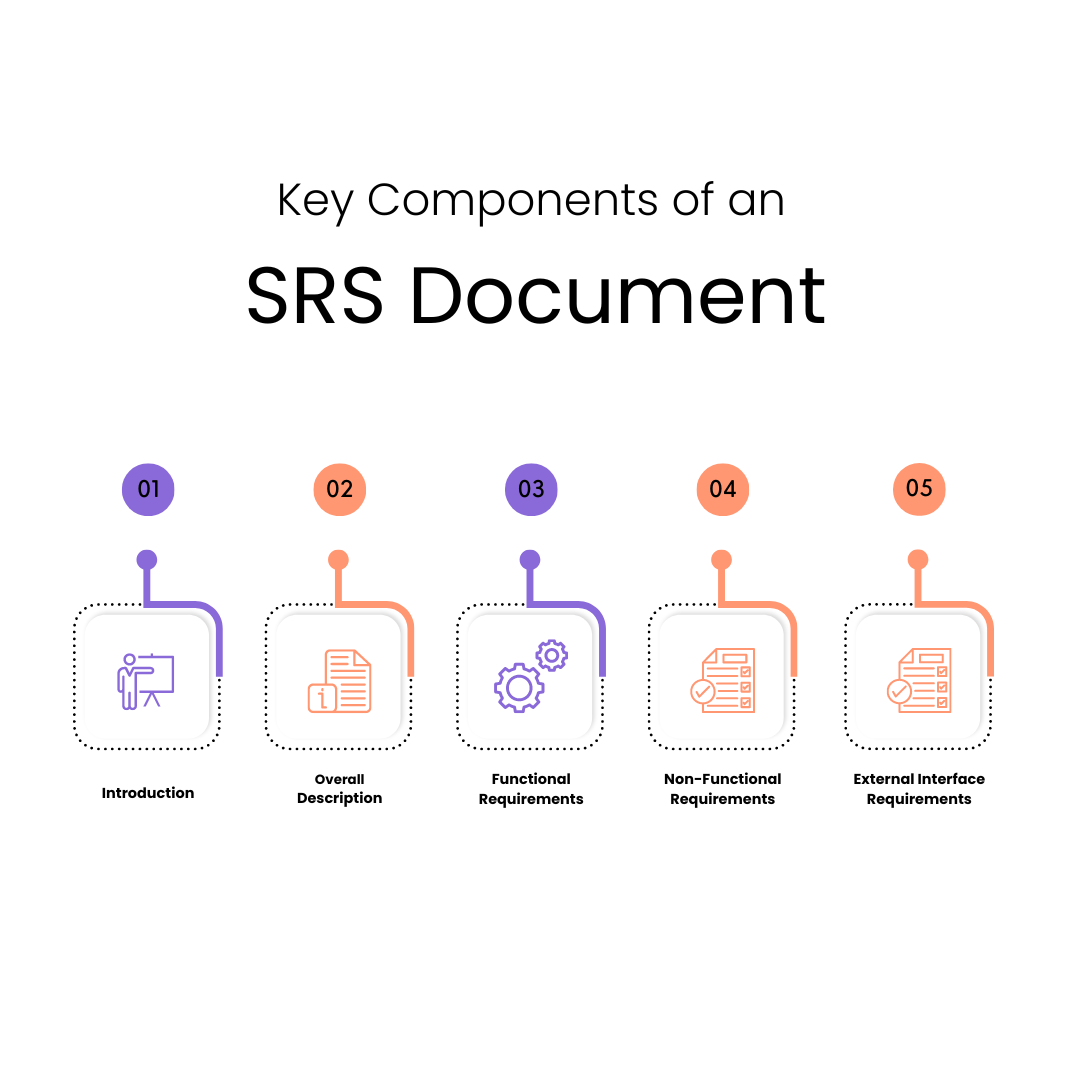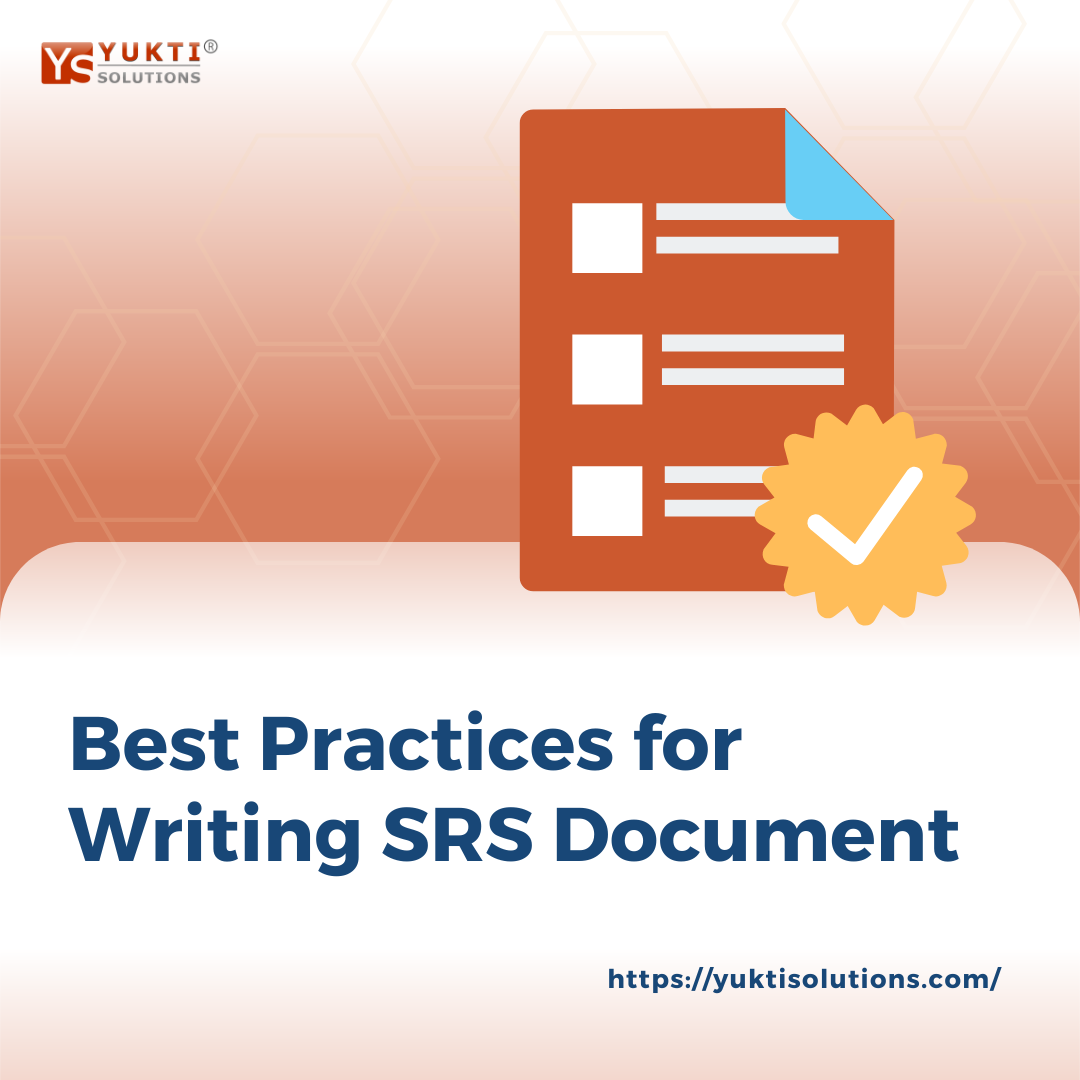6 Best Practices for Writing (SRS) Software Requirements Specifications
The SRS document acts as a roadmap for the development team, guaranteeing that the final product will meet every need and expectation required by stakeholders. 6 Best Practices...
.jpg)
What is Software Requirements Specification (SRS)? An Introduction:
Before we get down to the details of the SRS and best practices, let's first see what this document entails. The Software Requirements Specification, or SRS, is a detailed document that aims to perfectly represent the requirements of a software development project. It acts as an information link between stakeholders and the development team to provide a detailed map for the whole development project cycle.
It outlines functional and non-functional requirements, detailing what the software will do and how it will perform under various conditions. A SRS document is a foundational piece of project documentation that drives the entire development process, helping in planning, designing, implementing, and testing phases.
The Major Goals of an SRS Document are:
- It serves as a detailed description of the system’s functionality and requirements for all interested parties who are in communication. As well, the SRS document acts as a roadmap for the development team, guaranteeing that the final product will meet every need and expectation required by stakeholders.
- Similarly, this helps with scope management by clarifying what is within project boundaries and what lies outside them. The development team has a clear map, enabling them to follow up on their progress while ensuring they deliver something that is in line with the stakeholder’s mission.
- Change management processes are essential for handling any modifications or additions that may arise during the project. With a well-defined SRS document, the impact of requested changes can be easily assessed by the project team in order to determine how to handle them best.
- It provides a path that enables developers to trace identified requirements back to their design and test cases. Hence, this ensures all changes made are documented and put into effect, thereby minimizing the risks associated with errors or miscommunications.
- These aspects provide a future reference for maintenance and improvements. Not only does this process keep the project within budget and on track, it also provides a basis for future improvements and servicing.
Key Components of an SRS Document:

An effective SRS document generally consists of:
1. Introduction:
- Describes the purpose of the SRS and its intended audience.
- Defines the software's scope, including what the product will do and any constraints.
- Provides definitions for specific terms, acronyms, and abbreviations used in the document.
- Lists any documents referenced within the SRS.
- Gives a brief overview of the contents of the SRS document.
2. Overall Description:
- Describes the relationship of the product to other related products.
- Summarizes the major functions the software will perform.
- Identifies the different types of users and their characteristics.
- Describes the environment in which the software will operate.
- Lists any constraints on the system design or implementation.
- Outlines the scope of the user documentation that will be provided.
- States any assumptions and dependencies that could affect the requirements.
3. Functional Requirements:
Detailed descriptions of all the functions the software will perform, including data input and output requirements, data validation, and operational sequences.
4. Non-Functional Requirements:
- Specifies the performance constraints, such as speed, response time, and resource usage.
- Describes the requirements to ensure the software does not cause harm.
- Specifies the measures needed to protect the software from unauthorized access and data breaches.
- Describes requirements related to usability, reliability, maintainability, and portability.
- Details the interactions between this system and other systems, software, or hardware components.
5. External Interface Requirements:
- Describes the graphical, textual, and auditory interfaces with which users will interact.
- Specifies the hardware with which the software will interact.
- Describes interactions with other software applications.
- Details the protocols and interfaces for communication with other systems.
What is the reason that we must go through the SRS document before we do any Software Development?
Before the coding begins and the development team starts the complex work of software creation, it’s important that the Software Requirements Specification (SRS) document is well understood. Consider it to be the compass, which also helps in the development path. Here is the reason why you should stop for a while and look through the SRS document before embarking on software development: it's not only beneficial but also vital.
In simple terms, the SRS document is:
- Defines the Project Scope and Objectives: The software objectives are precisely defined, thus laying the firm groundwork for decision-making and project planning.
- Aligns Expectations: Acts as the common vision of developers and stakeholders, resulting in a clear understanding and meeting the client's high expectations.
- Anticipates Challenges: This functions as an early-warning system for the developers to forecast challenges and therefore reduce the risks earlier, so there won't be a surprise during the process.
- Optimizes Resources: Explains the requirements and functionality, thus making the use of resources such as hardware, software, and human resources possible.
- Fosters Communication and Collaboration: It becomes the central zone for the exchange of views, feedback, and refinement purposes; as a result, everyone does their part and understands the project fully.
- Aids in Cost and Time Estimation: It is a succinct description of the project’s necessities, which will enable the project managers to plan and allocate resources accordingly to ensure the project runs smoothly.
In essence, the Software Requirements Specification document is the foundation that holds the entire software development process together.
6 Best Practices to Consider for Writing an Effective SRS Document

The SRS is the essence of the software project, describing requirements, results, and milestones that are quite necessary for the software project. It acts as a communication bridge between parties and the development team, giving complete direction on the project life cycle process.
#1 Stakeholder Involvement and Communication:
1.1 Integrating the written vision into practical execution
It is the stakeholders who create the vision and the developers who bring them to the stage. The SRS has a translator role, helping to assign mission goals to functional requirements. The stakeholders who would be part of the process of translating this message would make sure that their views are properly considered and the end product is not any different from their imaginations.
1.2 Mutual understanding for conducting proficient decisions
Proper communication is the key currency of all successful projects. The SRS is not only a technical document but also a common platform for all parties to understand the basic system in the same fashion. While they develop these insights when actively participating in the process, they are confronted with technical barriers, time frames, and unexpected challenges.
1.3 Making the process clearer and decreasing the workload
Ambiguity, in this case, is the archenemy of the software development process. For the contributors, stakeholders who are actively involved in the process of defining the requirements definitely assist in defining the clarity of the SRS. The more clearly-written and unambiguous requirements, the lower the probability of misinterpretation, unsuccessful implementation, or other mistakes resulting in costly rework.
1.4 Adapting in "real-time" to such changing demands
The core of software development is its dynamic nature. However, the needs of the project may change over time. Often called SRS, the actively involved stakeholders ensure that it continues to be the cryptic kind of document that is capable of changing with the emerging requirements. The constant flow of communication channels keeps the stakeholders up to date with new priorities; this way, the development team will be in touch with current situations and can timely address any changes without affecting the project deadline.
1.5 Establishing the foundation of teamwork
Stakeholders’ effective participation involves not only their development of the SRS, but it also gives rise to a culture of collaboration. When stakeholders think that they are listened to and respected, they will be more active participants in the work, and they will be interested in its success. In the case of the assisted feedback setting, it is extended even after the SRS phase when the teams are working together to address future challenges.
#2. Clear and Concise Documentation:
2.1 The skill of expressing in a crystal clear manner
It is the clarity of the SRS document that needs real consideration, not its content. Making use of short and precise expressions facilitates the understanding of not only technical staff members but also others without technical knowledge. Language ambiguity begets misunderstanding, and there may even be such occasions where the whole development process is jeopardized.
2.2 Alignment with industry standards
First of all, following established documentation standards is crucial. It gives a professionalization to the document as well as ensures its consistency during the project. Since templates will stick to industry guidelines, they are very useful in creating SRS. It is also a very reliable tool for SRS since it speeds up the process and delivers excellence.
#3. Risk Mitigation through Comprehensive Validation:
3.1 Proactive Validation Processes
SRS functionality ensues from continuous changes and modifications driven by the exposure type. Discovering possibilities that are out of reach is a result of proactive validation systems and thorough reviews and validations that spot potential risks upfront rather than in the development cycle. The early-stage risk analysis leads to a reduction of the risks during the implementation stage of the project, which in turn reduces the possibility of flaws.
3.2 Periodically collect, process, and improve quality for perpetual evolution
The validation procedure is actually not a single-time event, so there is a need for continuous improvement of the process. Steady improvement is an approach where the SRS is regularly inspected and routinely inspected to enable it to align with the project's objectives. The key and continuous advancement of the document transforms with the underlying project accordingly, allowing for modifications and upgrades to the requirements and the removal of foreseeable risks.
#4. Adaptability for Agile Environments:
4.1 Being flexible is viewed as the core characteristic
The ability to juggle with changes is now the basis of the agile development process. SRS Best Practices are based on the ground rules of adaptability. The draft should be dynamic to incorporate feedback and to become living and breathing as the project progresses. Implementation and routine revision of best practices in SRS are crucial to ensuring the SRS is agile and able to adapt to change.
4.2 Collaboration over contract negotiation
Agile principles allow and even encourage people and their interactions rather than emphasizing processes and tools. SRS in agile environments typically works with methods where the contract approach may be weakened to build a collaborative atmosphere. Continuous communication and cooperation among the development staff and the stakeholders are given high specialization status, as what is needed is not solely to follow a blueprint but to adapt to the changing project requirements as well.
#5. Traceability and Accountability:
5.1 Establishing project requirements for performance and delivering
Traceability in the SRS is not just about joining specifications but also about creating a roadmap that leads you to success. Each of the requirements is expected to be concise and have a strong connection to the project's objectives. It enables monitoring of participation and cooperation.
5.2 Ensuring accountability across teams
Traceability also ensures accountability. Each member of a development team, from developers to testers, can be linked directly to a specific requirement available through the requirements. This appreciates not only transparency but also maintaining a sense of accountability; hence organizations are able to deliver with a clear notion of how they affect others.
#6. Continuous Improvement and Iterative Refinement:
6.1 A learning culture is an environment that propels
Protocols backed by many others remain unchanged whenever they are proven to bring positive outcomes. SRS best practices cultivate and propagate a culture that values growth and continuous learning. First, the use of periodic retrospective sessions, formative feedback loops, and post-activity appraisals offers an opportunity for spotting trends. With the feedback loop of the iterative method, development teams can optimize their processes and make them more effective by taking lessons from actual implementation.
6.2 Learning from successes and failures
Celebrating successes is quite an important thing that leads to the establishment of good practices. Through identifying mistakes, it is possible to find weak spots. A learned culture that considers the focus shifting from the project following each project to the SRS best practices encourages the framework to be not static rules but adaptive.
Conclusion: A Smart Decision Devoted to Project Success
Quite clearly, in this fast changing technological world, the Software Requirements Specification (SRS) is not just a document; rather, it is a strategic development. By following the guidelines and regulations, the SRS becomes a powerful instrument that responds to changes in the software development procedure to meet the needs of the moment.
Stakeholder participation and clear documentation, which are the starting points of best practices in an agile environment, risk management, adaptability, traceability, and regular improvement, are the foundations of a successful project.
